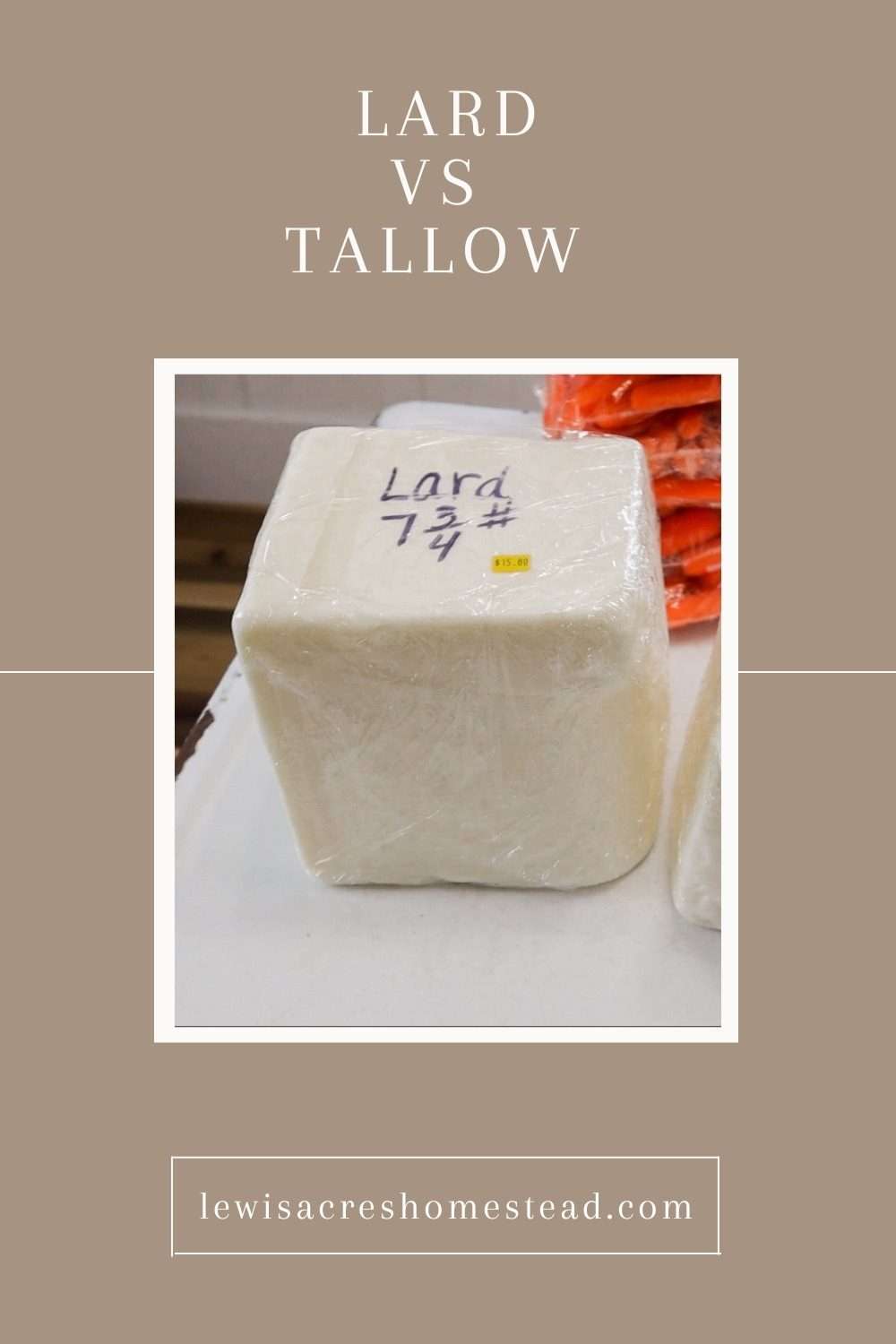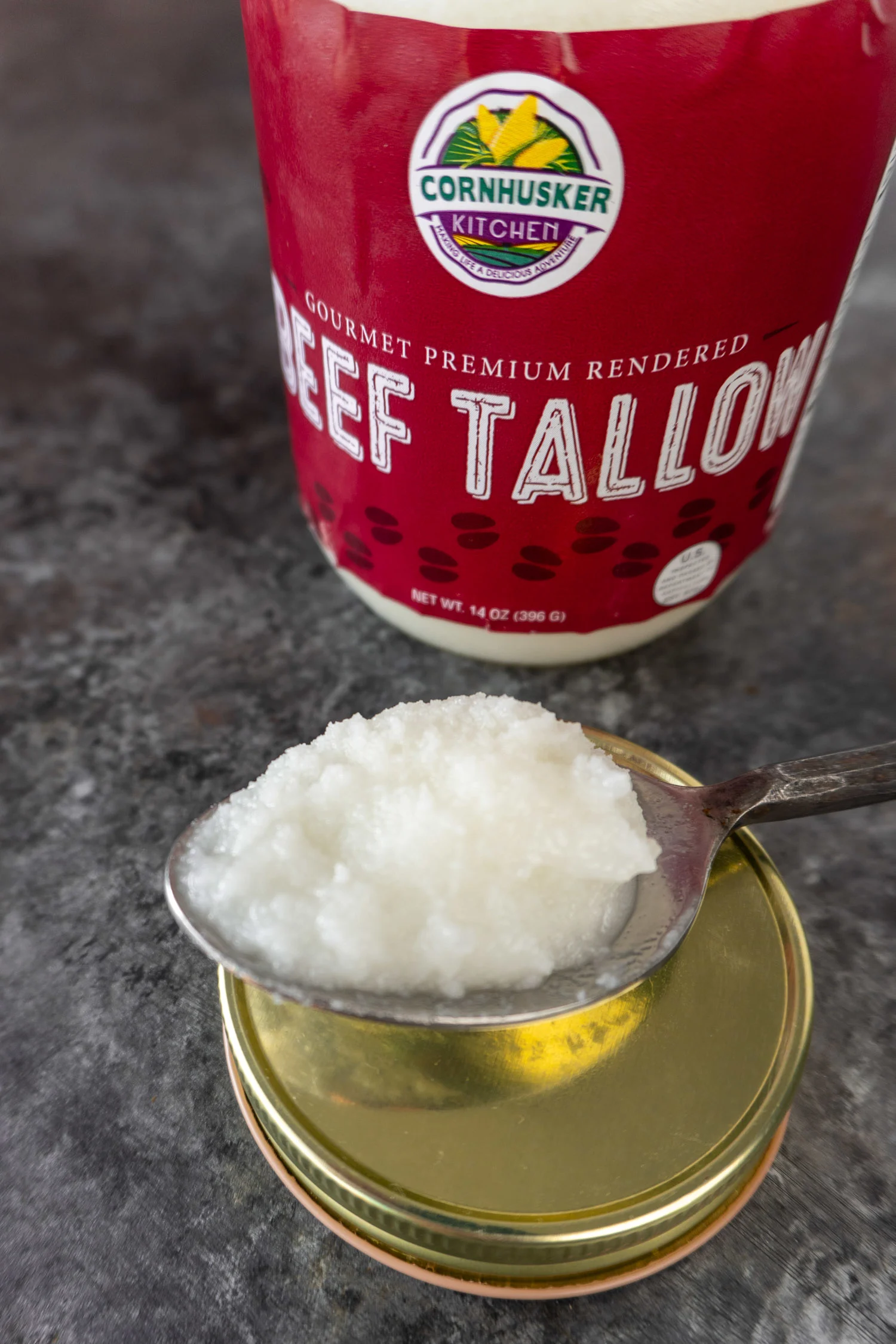Introduction
Introduction To Tallow And Lard As Animal Fats For Culinary Use
Tallow and lard are both traditional animal fats that have been used in cooking for centuries. These fats are derived from different animals and have distinct characteristics that make them suitable for various culinary applications. Tallow is rendered fat from beef or mutton, while lard comes from pigs. Both fats have a high smoking point, meaning they can withstand high heat without breaking down, making them ideal for frying and sautéing.
Overview Of The Differences And Similarities Between Tallow And Lard
Here are some key differences and similarities between tallow and lard:
| Tallow | Lard |
|---|---|
| Derived from beef or mutton fat | Derived from pig fat |
| Has a slightly stronger flavor | Has a mild flavor |
| High in saturated fats | Also high in saturated fats |
| Has a higher smoke point | Has a slightly lower smoke point |
| Solid at room temperature | Soft or semi-solid at room temperature |
| Used in traditional dishes like puddings and pastries | Used in traditional dishes like pies and biscuits |
Despite these differences, both tallow and lard can add richness and flavor to various recipes. They can be used interchangeably in many dishes, depending on personal taste and dietary preferences. It’s important to note that both fats are high in saturated fats, so moderation is key when incorporating them into your diet.
Tallow: Characteristics And Uses
Tallow Definition And Composition
Tallow is a rendered fat obtained from beef or mutton, typically from the suet or internal fat of the animal. It is composed primarily of saturated fats, making it a solid fat at room temperature. Tallow has a slightly stronger flavor compared to lard, which adds richness and depth to dishes.
Tallow In Cooking And Baking
Tallow has a high smoking point, making it excellent for frying and sautéing. Its ability to withstand high heat without breaking down makes it a popular choice for deep frying and searing. Tallow is commonly used in traditional dishes like puddings and pastries, where its flavor adds a delicious savory note.
While tallow and lard have similarities, such as their high smoke point and richness, tallow has a higher smoking point and a slightly stronger flavor compared to lard. This makes it ideal for recipes that require intense heat and a distinct beefy taste.
It’s important to note that both tallow and lard are high in saturated fats, which should be consumed in moderation as part of a balanced diet. Many recipes can interchangeably use tallow and lard based on personal preference and desired flavors.

Lard: Characteristics And Uses
Lard Definition And Composition
Lard is a rendered fat obtained from pigs, specifically from their abdominal fat. It is primarily composed of saturated fats, giving it a solid consistency at room temperature. Lard has a mild flavor that is less pronounced than tallow, making it versatile and suitable for various cooking applications.
Lard In Cooking And Baking
Lard has a high smoke point, similar to tallow, making it ideal for high-heat cooking methods such as frying and sautéing. Its ability to withstand heat without breaking down makes it a preferred fat for deep frying. Lard is commonly used in baking as well, especially in making pie crusts, biscuits, and pastries.
When comparing lard to tallow, although they share similarities such as their high smoke point and richness, lard has a milder flavor and a slightly lower smoking point. This makes it suitable for recipes where a delicate taste is desired or when a pork flavor is preferred over a beefy taste.
As with tallow, it is important to consume lard in moderation due to its high saturated fat content. Depending on personal preference and desired flavors, both tallow and lard can be used interchangeably in many recipes.
Tallow Vs Lard: Flavor Profile
Tallow Flavor And Aroma
Tallow, rendered fat from beef or mutton, has a distinct flavor and aroma. It has a rich, savory taste with hints of beefiness. The aroma of tallow can be described as meaty and slightly gamey. Due to its beefy flavor, tallow is often preferred in dishes where a robust and intense taste is desired.
Lard Flavor And Aroma
Lard, on the other hand, has a milder flavor compared to tallow. It has a subtle porky taste that is not overpowering. The aroma of lard is also less pronounced, making it versatile in a wide range of recipes. Lard’s mild flavor makes it a popular choice for dishes where a delicate taste is desired or when a subtle hint of pork flavor is preferred over the stronger beefy taste of tallow.
When comparing tallow and lard, it is important to consider the intended flavor and aroma profile of the dish. While tallow offers a robust and beefy taste, lard provides a more subtle and delicate pork flavor. The choice between tallow and lard ultimately depends on personal preference and the specific dish being prepared.
Both tallow and lard can be used interchangeably in various recipes. Whether it is for high-heat cooking methods like frying or sautéing, or for baking purposes such as making pie crusts or pastries, both fats offer unique flavors and characteristics that can enhance the overall taste of the dish.
Tallow Vs Lard: Nutritional Value
Tallow Nutritional Composition And Health Benefits
Tallow, rendered fat from beef or mutton, is known for its unique nutritional composition. It is rich in essential fatty acids, including omega-3 and omega-6 fatty acids, which are important for brain function and heart health. Tallow also contains high levels of conjugated linoleic acid (CLA), which has been associated with various health benefits, including reduced body fat and improved immune function.
Furthermore, tallow is a good source of fat-soluble vitamins, such as vitamins A, D, E, and K. These vitamins play crucial roles in maintaining healthy skin, supporting immune function, and promoting proper blood clotting.
Lard Nutritional Composition And Health Benefits
Lard, derived from pork fat, also offers distinct nutritional advantages. It is a good source of monounsaturated fats, which have been linked to improved cholesterol levels and a reduced risk of heart disease. Lard also contains small amounts of polyunsaturated fats, which are essential for overall health.
Additionally, lard is rich in vitamin D, a nutrient that is essential for bone health and immune function. Vitamin D helps the body absorb calcium and phosphorus, which are necessary for maintaining strong bones and teeth.
When comparing the nutritional composition of tallow and lard, it is clear that both fats provide unique health benefits. Tallow is rich in essential fatty acids and fat-soluble vitamins, while lard offers monounsaturated fats and vitamin D. The choice between tallow and lard depends on individual dietary needs and preferences.

Tallow Vs Lard: Smoke Point
Tallow Smoke Point And Cooking Applications
Tallow, derived from beef or mutton, has a high smoke point of around 400°F (204°C). This makes it well-suited for high-heat cooking methods such as frying and roasting. The high smoke point means that tallow can withstand high temperatures without breaking down and producing harmful compounds.
In addition to its high smoke point, tallow also has a distinct flavor that adds richness to dishes. It is commonly used in traditional recipes, such as beef tallow fries and Yorkshire puddings. Tallow can also be used as a substitute for butter or oil in baking, providing a unique taste and texture to baked goods.
Lard Smoke Point And Cooking Applications
Lard, derived from pork fat, has a slightly lower smoke point compared to tallow, typically ranging from 370°F to 400°F (187°C to 204°C). While it may not withstand the same high temperatures as tallow, lard is still suitable for a variety of cooking methods.
Lard is often used in cooking and baking for its ability to provide flavor and moisture to dishes. It is commonly used in recipes such as pie crusts, biscuits, and even savory dishes like fried chicken. The subtle pork flavor of lard adds depth and richness to the final dish.
When considering the smoke point and cooking applications, both tallow and lard have their unique uses. Tallow is better suited for high-heat cooking methods, while lard is popular for its flavor-enhancing properties in both sweet and savory dishes. The choice between tallow and lard ultimately depends on the desired flavor and cooking method.
Tallow Vs Lard: Texture And Consistency
Tallow Texture And Consistency In Culinary Applications
Tallow, derived from beef or mutton, offers a distinct texture and consistency in culinary applications. It has a smooth and creamy texture when melted, making it easy to incorporate into recipes. Tallow provides a rich and indulgent mouthfeel, adding a luxurious element to dishes.
In solid form, tallow has a firm and slightly crumbly consistency. This makes it ideal for use in pie crusts and other pastry recipes that require a flaky texture. The solid consistency also allows for easy cutting or shaping when cooking techniques such as cubing or rendering are needed.
Lard Texture And Consistency In Culinary Applications
Lard, made from pork fat, also offers a unique texture and consistency in cooking. When melted, lard becomes smooth and velvety, providing a silky feel to dishes. Its creamy texture helps to distribute flavor evenly throughout the food, resulting in a well-balanced taste.
In solid form, lard has a semi-firm texture that is easily spreadable. This makes it suitable for use in spreads and as a replacement for butter or margarine. The semi-firm consistency of lard also lends itself well to creating flaky pie crusts and biscuits.
Overall, both tallow and lard bring their own textures and consistencies to culinary creations. Tallow offers a smooth and creamy texture when melted, while lard provides a silky and spreadable consistency. The choice between the two ultimately depends on the desired mouthfeel and application in a recipe.
Cooking With Tallow And Lard: Recipes And Tips
Popular Recipes Using Tallow And Lard
- Tallow: Tallow is commonly used for frying and sautéing due to its high smoke point. It is perfect for making crispy and flavorful fried chicken, french fries, and onion rings.- Lard: Lard is often used in baking to create light and flaky pastries. It is ideal for making pie crusts, biscuits, and tarts. Lard can also be used to make deliciously tender and juicy roasted meats.
Tips For Cooking And Baking With Tallow And Lard
- Melted tallow or lard can be used as a replacement for oil or butter in many recipes. It adds a unique flavor and richness to dishes.- When using tallow or lard in baking, make sure they are chilled or at room temperature for best results. This will help create the desired texture in pastries.- For frying, it is advisable to use a deep fryer or a heavy-bottomed pot to ensure even heat distribution and to prevent splattering.- Both tallow and lard can be stored in the refrigerator or freezer for extended shelf life. Make sure to store them in airtight containers to prevent any odors from permeating.
Overall, tallow and lard provide distinct flavors, textures, and consistencies in cooking. Their versatility makes them valuable ingredients in both savory and sweet recipes. Explore different dishes and experiment with these fats to enhance the taste and texture of your culinary creations.
Cooking With Tallow And Lard: Recipes And Tips
Popular Recipes Using Tallow And Lard
- Tallow: Tallow is commonly used for frying and sautéing due to its high smoke point. It is perfect for making crispy and flavorful fried chicken, french fries, and onion rings.- Lard: Lard is often used in baking to create light and flaky pastries. It is ideal for making pie crusts, biscuits, and tarts. Lard can also be used to make deliciously tender and juicy roasted meats.
Tips For Cooking And Baking With Tallow And Lard
- Melted tallow or lard can be used as a replacement for oil or butter in many recipes. It adds a unique flavor and richness to dishes.- When using tallow or lard in baking, make sure they are chilled or at room temperature for best results. This will help create the desired texture in pastries.- For frying, it is advisable to use a deep fryer or a heavy-bottomed pot to ensure even heat distribution and to prevent splattering.- Both tallow and lard can be stored in the refrigerator or freezer for extended shelf life. Make sure to store them in airtight containers to prevent any odors from permeating.
Conclusion
Summary Of The Main Differences And Similarities Between Tallow And Lard
In summary, tallow and lard have distinct characteristics that make them suitable for different culinary applications:
- Tallow has a high smoke point, making it ideal for frying and sautéing. It adds a crispy texture and rich flavor to dishes.
- Lard is often used in baking to create light and flaky pastries. It adds tenderness and a buttery flavor to baked goods.
Both tallow and lard can be used interchangeably in some recipes, but their flavors and textures may vary slightly.
Final Thoughts On Choosing Between Tallow And Lard In Culinary Applications
When choosing between tallow and lard in your cooking and baking, consider the specific recipe and the desired outcome. If you’re looking for a crispy texture and deep flavor, tallow is a great choice for frying. On the other hand, if you want light and flaky pastries or tender roasted meats, lard is the way to go.
Feel free to experiment with both fats to find the perfect balance of flavor and texture in your culinary creations. Store them properly to extend their shelf life and enjoy the unique qualities that tallow and lard bring to your dishes.
FAQ: Navigating the Culinary World of Animal Fats – Tallow vs Lard
What is the difference between tallow and lard?
Tallow and lard are both types of animal fats, but they differ in their sources. Tallow is rendered fat from beef or mutton, while lard is rendered fat from pigs.
Can tallow and lard be used interchangeably in recipes?
Yes, tallow and lard can often be used interchangeably in recipes. However, due to their different flavor profiles, they may alter the taste of the final dish. It’s best to consider the desired flavor and choose accordingly.
Which one is healthier: tallow or lard?
Both tallow and lard can be part of a balanced diet when consumed in moderation. They are natural sources of fat and contain vitamins and minerals. However, the nutritional content may vary depending on the specific animal and its diet, so it’s important to choose high-quality, organic options.
Are there any differences in texture and consistency?
Tallow and lard have slightly different textures and consistencies. Tallow tends to be firmer and waxier when solid, while lard is softer and more spreadable. When heated, both can melt and become liquid, making them versatile for cooking and baking.
Which one is better for frying?
Both tallow and lard have high smoke points, which make them suitable for frying at higher temperatures. However, tallow has a slightly higher smoke point than lard, making it a better option for deep-frying or searing at very high temperatures.
Can tallow and lard be used for baking?
Yes, both tallow and lard can be used for baking. They can be used as substitutes for butter or vegetable oils in various recipes, such as pie crusts, biscuits, and pastries. They can add richness and flavor to baked goods.
Are tallow and lard suitable for vegetarians or vegans?
No, tallow and lard are derived from animal sources, so they are not suitable for vegetarians or vegans. However, there are plant-based alternatives available that can mimic the texture and flavor of animal fats, such as coconut oil or vegetable shortening.
Do tallow and lard have a strong flavor?
Tallow and lard both have distinct flavors, but the intensity can vary depending on the quality of the fat and the animal’s diet. Tallow tends to have a slightly stronger flavor and aroma compared to lard. It’s best to try them out in smaller quantities to determine your preference.
Are tallow and lard easily accessible?
Tallow and lard can be found in many grocery stores, specialty meat markets, or butchers. Some people even render their own fat from meat trimmings at home. It’s important to choose high-quality, organic sources for the best flavor and nutritional content.
In conclusion, tallow and lard are versatile animal fats that can add richness and flavor to a variety of recipes. While they share many similarities, such as high smoke points and culinary applications, they do have some distinct differences in flavor and texture. Ultimately, the choice between tallow and lard depends on personal preference and the desired outcome in your culinary creations.

The Stone’s Sports Grill and Bar was Established on December 1, 2021. The Stone is a Sequel to another restaurant called Cornerstone’s First Edition in Tucumcari, NM. This particular venue is located on the Southeast side of Colorado Springs. The Stone is Wide Open. We have a large dance floor, multi-level stage, pool room, (5) dart boards, and a bar with a large selection of wine spirits and brews.